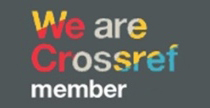KONSEP SUSUNAN RUANG DAN RAGAM VITRIN PADA PAMERAN TEMPORER NASKAH FILOLOGIKA
DOI:
https://doi.org/10.51804/deskovi.v7i1.14846Keywords:
Aceh Museum, Calligraphy Manuscript, Philological Exhibition, Spatial Order, Philological VitrineAbstract
Museum Aceh pada Bulan Agustus hingga September 2023 mengadakan sebuah pameran temporer yang bertajuk “Rahasia Peradaban dalam Aksara”. Pameran ini mengangkat koleksi filologika (naskah kuno) sebagai objek pamer. Naskah-naskah tersebut terdiri dari ayat suci Al-Qur’an, kitab ajaran Islam, sejarah dan mantra-mantra masa lalu yang sebagian besar ditulis dalam kaligrafi Arab berbahasa Melayu. Dengan menggunakan pendekatan deskriptif kualitatif, penelitian ini mengkaji susunan ruang dalam perspektif arsitektur dan desain interior, pada pameran koleksi filologikan yang memuat konten sakral. Selain itu, studi ini juga bertujuan untuk mengkaji bagaimana ragam vitrin yang melindungi naskah-naskah filologika tersebut. Penelitian ini menemukan bahwa dalam suatu ruang pameran tanpa pembatas yang masif, terdapat area-area dengan fungsi yang berbeda-beda. Selain itu, terbentuk hubungan antar area dalam pameran yang dihasilkan dari susunan konten pameran berdasarkan geografis asal koleksi dan pengurutan koleksi berdasarkan waktu. Untuk melindungi naskah dan menyampaikan informasi filologika, pameran ini juga mengembangkan ragam jenis vitrin yang terdiri dari box tertutup transparan dan panel lepas.
From August to September 2023, Museum Aceh held a temporary exhibition entitled "Rahasia Peradaban dalam Aksara." The exhibition highlights the collection of philology (ancient manuscripts) as the object of the exhibition. The manuscripts consist of Qur'anic verses, Islamic scriptures, history, and past mantras, most of which are written in Arabic calligraphy in Malay. By using a qualitative descriptive methodology, this study investigates the spatial configuration of philological collections containing religious material within the context of interior design and architecture. In addition, this study also aims to investigate how various vitrines can protect the manuscripts containing the Qur'an, religious books, and mantras. This study indicated that exhibition spaces without enormous walls have diverse uses. Additionally, the arrangement of exhibition content according to the geographical origin of the collection and the chronological categorization of the collection established the relationship between regions. To conserve the manuscripts and provide philological information, the exhibition introduced a set of vitrines made out of transparent closed boxes and loose panels
Downloads
References
Anon. (2023). “Katalog Koleksi Filologika Pameran Regional Sumatera.”
Ar, Nurdin. (2012). “The Manuscript Collection of Aceh Museum.” Indonesia and the Malay World 40(116):94–110. doi: 10.1080/13639811.2011.649001.
Baried, Siti Baroroh, Siti Chamamah Soeratno, Sawoe Sawoe, Sulastin Sutrisno, and Moh Syakil Moh. Syakil. (1985). Pengantar teori filologi. edited by N. Hasjim. Jakarta: Pusat Pembinaan dan Pengembangan Bahasa.
Begum, M., and MS Uddin. (2020). “Digital Image Watermarking Techniques: A Review.” Information (Query date: 2024-05-13 15:39:15).
Ching, Francis D. K. (2010). Architecture: Form, Space, and Order. John Wiley & Sons.
Classen, Constance, and David Howes. 2006. “The Museum as Sensescape: Western Sensibilities and Indigenous Artifacts.” Sensible Objects: Colonialism, Museums and Material Culture 5:199.
Fathurahman, Oman. (2015). Filologi Indonesia Teori dan Metode. Prenada Media.
Hannah, Dorita. 2018. “Event-Space: A Performance Model for Spatial Design.” Pp. 300–309 in The interior architecture theory reader. Routledge.
Howes, David, Nina Levent, and Alvaro Pascual-Leone. (2014). “The Secret of Aesthetics Lies in the Conjugation of the Senses.” The Multisensory Museum: Cross-Disciplinary Perspectives on Touch, Sound, Smell, Memory, and Space. 285–300.
Moleong, Lexy J. (2014). “Qualitative Research Methods Revised Edition.” Bandung: Teen Rosda Paper.
Obrist, Hans Ulrich, Lionel Bovier, and Birte Theiler. (2008). A Brief History of Curating. JRP/Ringier Zurique.
Ornato, Ezio. (2021). “Watermarks Galore. Observations on the Number and Homogeneity of Papers Used in Manuscripts and Incunabula.” Trends in Statistical Codicology 19:149.
Papadaki, Elena. (2015). “Curating Lights and Shadows, or the Remapping of the Lived Experience of Space.” The Senses and Society 10(2):217–36.
Purnomo, Agung, Basnendar Herryprilosadoso, and Ranang Agung Sugihartono. (2012). “ALTERNATIF DESAIN VITRIN UNTUK MUSEUM RADYAPUSTAKA.” Pendhapa 3(2). doi: 10.33153/pendhapa.v3i2.1193.
Shofiyah, Siti Tsani. n.d. “Mengenal Watermarks.” State Islamic University of Sunan Gunung Djati Bandung
Sugiyono, Sugiyono. (2021). “The Evaluation of Facilities and Infrastructure Standards Achievement of Vocational High School in the Special Region of Yogyakarta.” Jurnal Penelitian Dan Evaluasi Pendidikan 25(2):207–17.
Tzortzi, Kali. (2016). Museum Space: Where Architecture Meets Museology. Routledge.
Vom Lehn, Dirk. 2013. “Withdrawing from Exhibits: The Interactional Organisation of Museum Visits.” Interaction and Mobility: Language and the Body in Motion 20:65–90.
Welchman, John C. (2013). Sculpture and the Vitrine. Ashgate Publishing, Ltd.
Downloads
Published
How to Cite
Issue
Section
License
Copyright (c) 2024 DESKOVI : Art and Design Journal

This work is licensed under a Creative Commons Attribution 4.0 International License.
With the receipt of the article by DADJ Editorial Board and the decision to be published, the copyright regarding the article will be transferred to DADJ. The copyright transfer form can be downloaded here.
DADJ has the right to multiply and distribute the article and every author is not allowed to publish the same article that was published in this journal.

DESKOVI: Art and Design Journal is licensed under a Creative Commons Attribution 4.0 International License.
Under the following terms:
Attribution — You must give appropriate credit, provide a link to the license, and indicate if changes were made. You may do so in any reasonable manner, but not in any way that suggests the licensor endorses you or your use.






